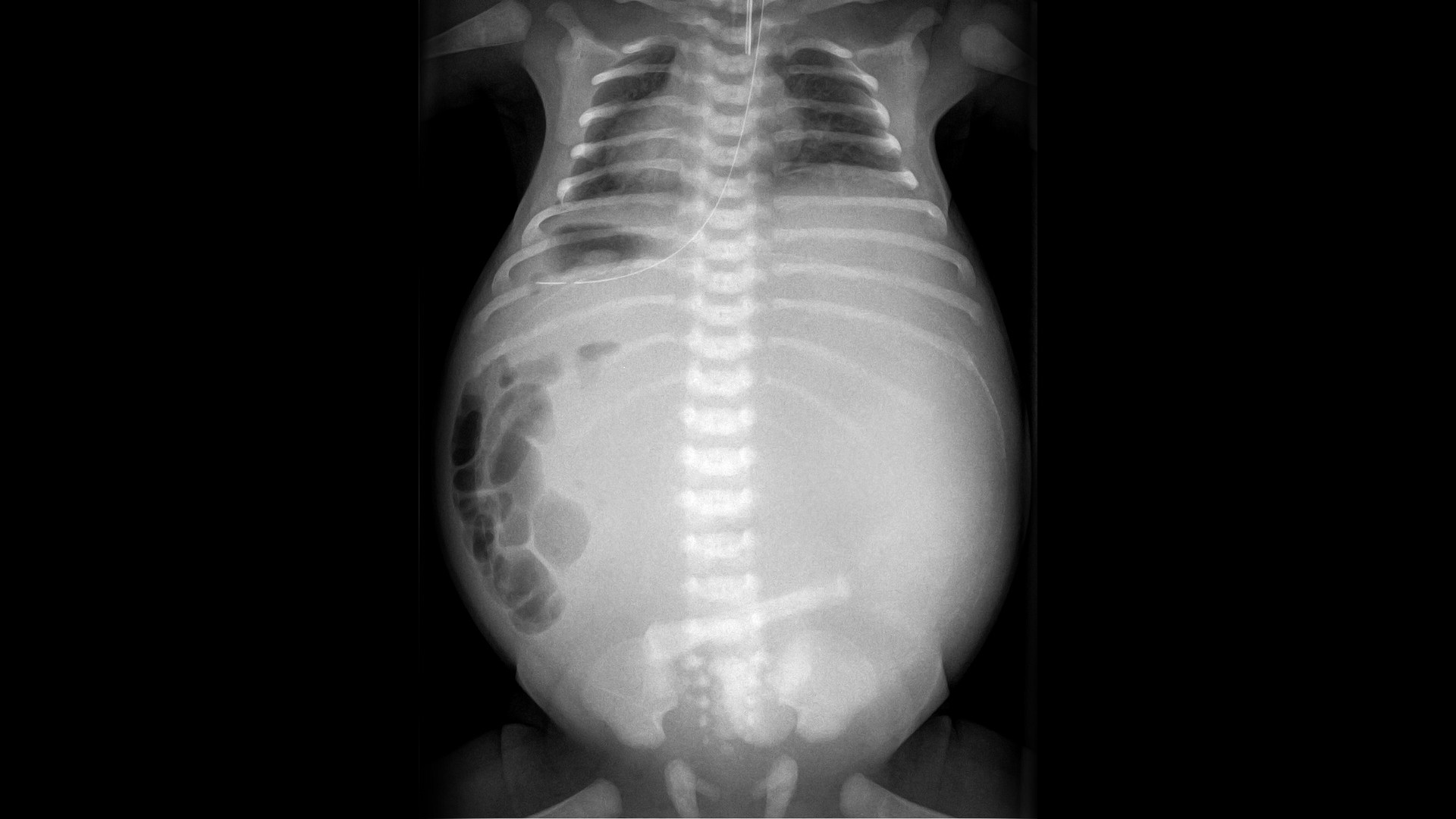
Colonic atresia is a rare congenital condition where a portion of the colon is either absent or narrowed, causing significant health issues if not treated quickly. Affecting about 1 in 20,000 to 1 in 66,000 live births, this anomaly leads to symptoms like vomiting, abdominal distension, and failure to pass meconium in newborns. Diagnosis often involves abdominal radiography and contrast enemas. Surgical intervention is crucial for restoring intestinal function. Despite its rarity, understanding colonic atresia is vital for early detection and effective treatment, ensuring better outcomes for affected infants. Let's delve into 25 essential facts about this condition.
Key Takeaways:
- Colonic atresia is a rare condition affecting the colon in newborns, with symptoms like vomiting and abdominal distension. Early diagnosis and surgical treatment lead to positive outcomes and a favorable prognosis.
- Understanding the incidence, symptoms, and treatment of colonic atresia is crucial for neonatal health. Ongoing research aims to improve prenatal detection and long-term outcomes for affected individuals.
What is Colonic Atresia?
Colonic atresia is a rare congenital condition where a part of the colon is either absent or narrowed. This anomaly can cause serious health issues if not treated quickly. Here are 25 essential facts about colonic atresia, covering its incidence, symptoms, diagnosis, treatment, and outcomes.
Incidence and Prevalence
Understanding how common colonic atresia is can help in recognizing its significance in neonatal health.
- Colonic atresia is rare, occurring in about 1 in 20,000 to 1 in 66,000 live births.
- It accounts for approximately 1.8% to 15% of all intestinal atresias.
Clinical Presentation
Newborns with colonic atresia often show specific symptoms that indicate intestinal obstruction.
- Symptoms include failure to pass meconium, vomiting, abdominal distension, and feeding intolerance.
- The severity of symptoms varies depending on the location and type of atresia.
Diagnostic Methods
Accurate diagnosis is crucial for effective treatment. Several methods are used to identify colonic atresia.
- Abdominal radiography is the primary diagnostic tool, showing a dilated intestine with air-fluid levels.
- A contrast enema confirms the diagnosis by revealing a distal microcolon and the absence of contrast beyond the atretic segment.
Associated Malformations
Colonic atresia often occurs alongside other congenital anomalies, which can complicate diagnosis and treatment.
- Common associated anomalies include gastroschisis, small bowel atresia, omphalocele, and anorectal malformations.
- Other associated conditions can include ocular and facial malformations, common bile duct cysts, musculoskeletal abnormalities, and Hirschsprung's disease.
Types of Colonic Atresia
Colonic atresia can be classified into different types based on the Grosfeld classification system.
- Type I: Mucosal web.
- Type II: Fibrous cord.
- Type III: Mesenteric gap defect.
- Type IIIa is the most common, accounting for about 79% of cases.
Location of Atresia
The location of the atresia within the colon can vary, affecting the symptoms and treatment approach.
- The right colon is affected in 38% of cases.
- The transverse colon is involved in 48% of cases.
- The left colon is the least commonly affected, with 14% of cases.
Management and Treatment
Surgical intervention is the primary treatment for colonic atresia. The goal is to restore intestinal continuity.
- Colocolic Anastomosis: Connecting the proximal and distal segments of the colon, often with a covering ileostomy.
- Colostomy: A temporary colostomy may be performed to divert the fecal stream and allow healing.
- Primary Anastomosis: In some cases, primary anastomosis without a colostomy can be performed if the patient is stable.
Surgical Outcomes
Surgical outcomes for colonic atresia are generally positive, but complications can occur.
- Operative mortality ranges from 4% to 10%.
- Possible complications include wound infection, colostomy prolapse, prolonged ileus, and late adhesive bowel obstruction.
Prognosis
The prognosis for colonic atresia is generally favorable if treated promptly.
- The mortality rate is less than 10%, but it can increase to 100% if treatment is delayed beyond 72 hours due to the risk of intestinal perforation and peritonitis.
Risk Factors and Etiology
Understanding the risk factors and causes of colonic atresia can help in early detection and prevention.
- Risk factors may include genetics, poor prenatal care, and low birth weight.
- The exact cause is not fully understood but may involve mesenteric vascular accidents during fetal development.
Prenatal Diagnosis
While often diagnosed postnatally, some cases of colonic atresia can be detected before birth.
- Prenatal ultrasound can sometimes detect colonic atresia, especially if maternal polyhydramnios and duodenal obstruction are present.
Future Research Directions
Ongoing research aims to improve understanding and treatment of colonic atresia.
- Future studies will focus on better understanding the etiology, improving prenatal detection methods, and studying long-term outcomes and quality of life for survivors.
Final Thoughts on Colonic Atresia
Colonic atresia, though rare, demands swift diagnosis and treatment to prevent severe complications. Newborns often show signs like vomiting, abdominal distension, and failure to pass meconium. Abdominal radiography and contrast enemas are key diagnostic tools. Surgical intervention, such as colocolic anastomosis or colostomy, is essential for restoring intestinal continuity. While the prognosis is generally favorable, timely treatment is crucial to avoid life-threatening issues like intestinal perforation and peritonitis. Associated congenital anomalies and genetic factors can complicate the condition, making comprehensive care vital. Long-term outcomes are positive, but some patients may face chronic constipation or bowel obstruction. Continued research into the etiology and risk factors will help improve prenatal detection and overall patient care. Understanding these aspects ensures better management and quality of life for those affected by colonic atresia.
Frequently Asked Questions
Was this page helpful?
Our commitment to delivering trustworthy and engaging content is at the heart of what we do. Each fact on our site is contributed by real users like you, bringing a wealth of diverse insights and information. To ensure the highest standards of accuracy and reliability, our dedicated editors meticulously review each submission. This process guarantees that the facts we share are not only fascinating but also credible. Trust in our commitment to quality and authenticity as you explore and learn with us.


